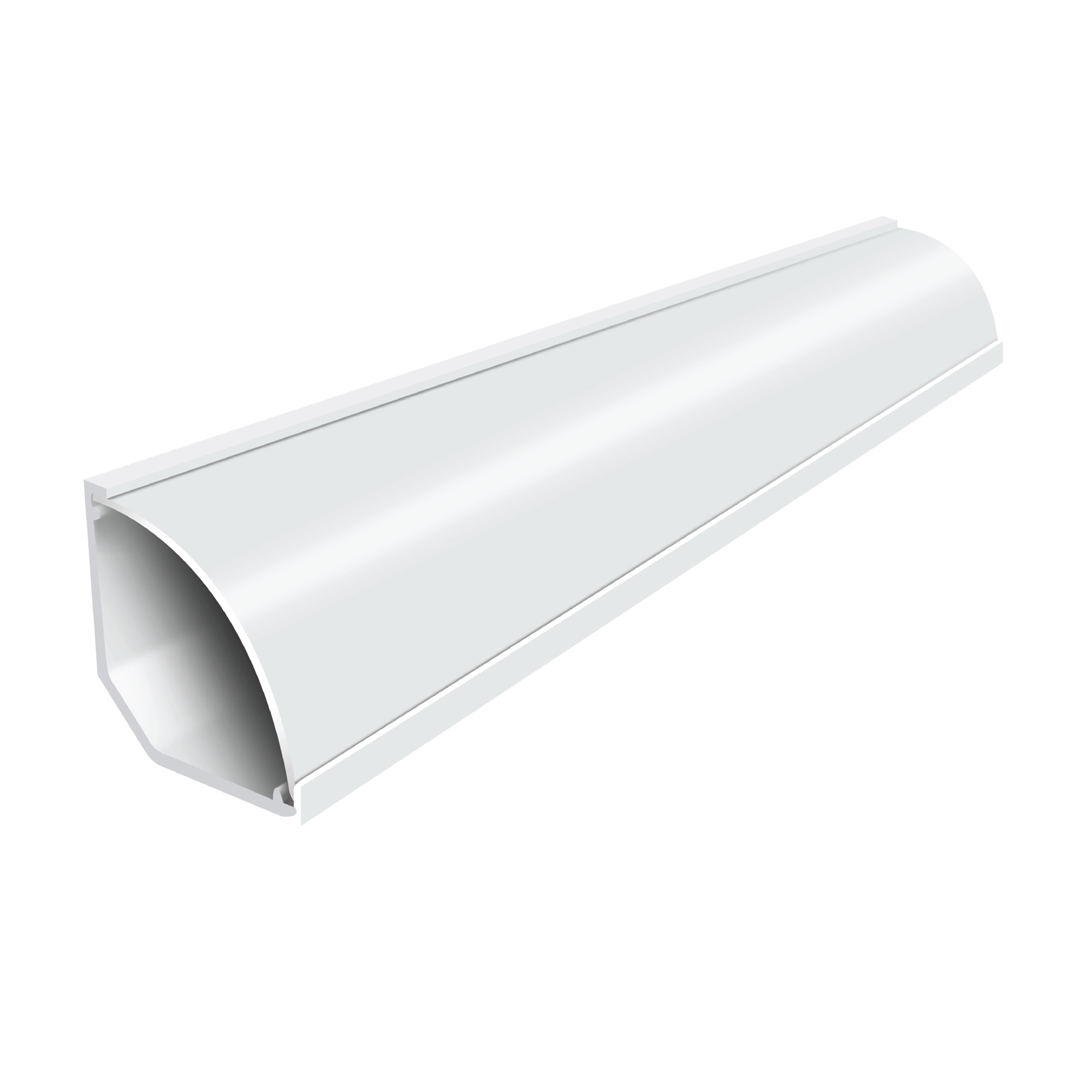
What do you think of when you hear the word “raceway?” Maybe you think of a racetrack where some kind of competitive speed event takes place, involving cars or horses. And there's nothing wrong with that. That is, in fact, a “raceway.”
But a raceway as CableOrganizer® knows it, is a channel where cables run through, that can be mounted on a wall, desk, or some other surface. It conceals wires or cables to both protect them and make the environment they are in, more aesthetically pleasing. It is legitimately one of the most useful and versatile cable management tools for both home users and professionals, doing wonders for both a DIY home theater set-up and a Fortune 500 company’s conference room.
While it is a track for hiding cables, it's much more complex than that: there are tons of different types of raceways, with each suited for a unique application. What are the differences? Which one is right for you? If those are your questions, then you've come to the right place. Let's look:
FOR THE HOME
Around the house, latching raceway is the tried and true, go-to solution for your basic cable management needs. It's typically found in straight sections of various lengths — though sometimes it's on a roll — and it usually features a hinged latching top. You open the latch, pop some cables inside, and then close it back up, concealing them from view. It's extremely versatile and can be cut to the desired size. The raceway can then be painted to match the surrounding décor. A myriad of accessories are available to get just the right set up. Elbow bends, T-junctions, couplers, and more, can help you make turns, go around corners, or split your cables off in different directions. It typically features an adhesive backing to install it on smooth flat walls without any tools. Just peel and stick. It works really well for speaker wire, TV cables or other cords that travel up walls.
For cables that travel closer to the floor or ceiling, corner duct raceway is probably a better bet. It's a quarter-round shaped wire moulding that blends into the wall/ceiling junctions or baseboards. It's like a crown moulding but with the added functionality of hiding your unsightly cables. There's even a literal crown molding surface raceway available, for that extra decorative touch.
FOR THE OUTDOORS
What about cables that must run on the outside of buildings or other structures, like utility poles? In that case you'll want something that's specifically designed to stand up to the elements. That's where wire guard comes in. It's like the rugged, beard-having, hiking-boots-wearing cousin of indoor surface raceway. Made of high impact PVC to protect the cables held within from environmental perils (not to mention nosy children, pets, raccoons or other varmints, etc.), it's available in two versions: one for standard vertical cable management (for data or communication cables) and another with a belled end that meets “complete enclosure” requirements, for high voltage cable management.
It lacks some of the bells and whistles of typical home or office surface raceway: no self-adhesive backing or latching covers here. But what it loses in convenience it makes up for in durability. It can take a punch and keep on guarding your outdoor cables like a champ.
FOR COMMERCIAL / INDUSTRIAL SETTINGS
There's also a little something called extruded aluminum surface raceway, which is tough enough for outdoor applications — and looks great in industrial or commercial settings.
Usually, in these types of settings (think server room, warehouse, factory), cables are guided through wire cable trays. This is convenient, because it allows for easy access to cables, and has space for ventilation and allows dust and other materials to fall through without settling on the cables.
This isn't always feasible though. Sometimes, your cables are just too precious to allow them to be supported by nothing but wire trays. Fiber optic cables, for example, are extremely sensitive, and must be protected from the dangerous world around them, like a baby or a delicate flower.
Fortunately, there's a raceway alternative, which you probably guessed since this article is all about raceway. FiberRunner® Cable Channels by Panduit® are like raceway in their enclosed construction (made from PVC), but function like cable trays in that they can be mounted and routed in many different directions to create your desired cable run.
Maybe you're just working with non-fiber low-voltage power or communication cables, but still need more protection than a wire tray provides. There's a raceway for that too: the Cable Runway Support System is a modular, easy to install option that can hold up to 6 lbs. of cable per foot.
And there you have it! Hopefully now, when you think “raceway,” you'll think of protecting cables, as well as things going around a track at fast speeds.
Here are some various raceway products you may additionally like to explore below:


